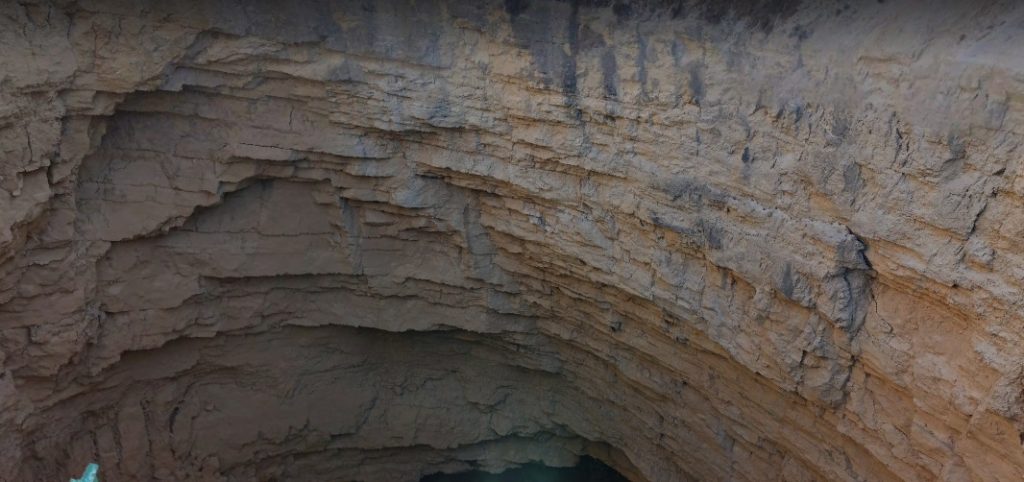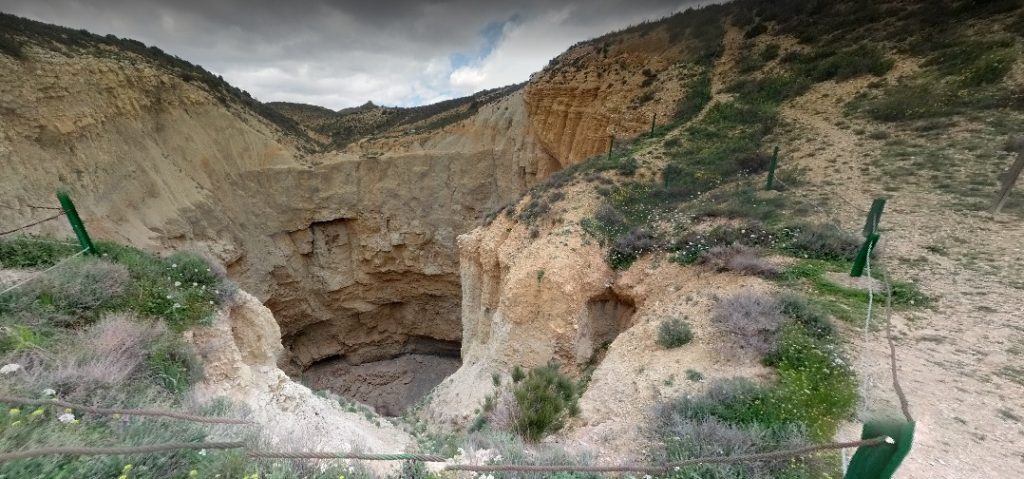Aragon – there is something majestically Spanish in the sound of this word. How much do we know about this autonomous region in northern Spain? Today we will try to talk about interesting, but not very well-known facts of the history, sights and features of Aragon.
Sima de San Pedro is located in Spain, in the autonomous community of Aragon, near Oliete, a small town of 357 inhabitants.

Although this place is located in the middle of nowhere, it can be reached either by car or on foot along a wonderful trail about 1.6 km long, immersed in an almost deserted landscape of incredible beauty. This region is characterized by aridity and extreme temperatures. It is a karst abyss with a mouth about 100 meters in diameter and 108 meters deep. It is considered unique in Europe due to its complex and rich geological structure. Right at the bottom of the excavation there is a 22-meter-deep lake containing 560,000 cubic meters of water.

This natural landmark is known as one of the most unique and important ecosystems in the region. Sima de San Pedro is an exceptional example of a microclimate, home to over 25 species of vertebrates, including amphibians, reptiles, birds and mammals, as well as important bat colonies.

It is a haven for geologists, cavers and bird watchers from all over the world who host national and international speleology competitions here. Visitors can admire the entire abyss from a high-altitude walkway. It is a unique and dizzying sight, surrounded by Jurassic walls that will take your breath away.

La Sima de San Pedro is located in the Sierra de Arcos. Traditionally, the inhabitants of the area considered it a magical place. The reasons can be found in the very physical form of the abyss due to the hidden.
This chasm is an oasis of natural species with a humid climate in a region characterized by aridity and extreme temperatures.

The mouth has a diameter of 95 meters and a depth of 108 meters, the bottom of which is partially occupied by a lake with an area of about 4000 m2. an extension that allows very different species of animals to coexist.
The origin of the abyss is associated with a sinkhole (underground cave), which underwent an upward erosion process, so its roof collapsed. Observed materials are Jurassic limestones covered with clay marls.
Excursions in Spain by local guides here https://1001guide.net/en/spain